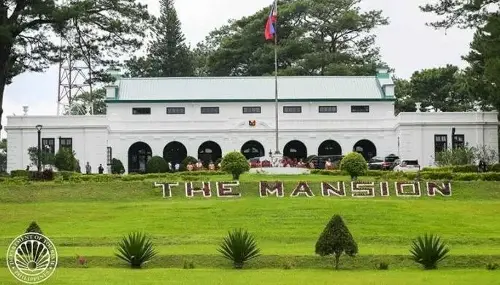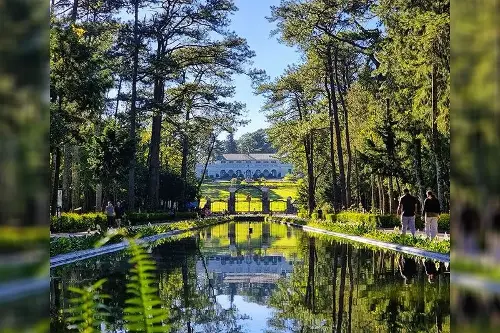
MANILA, Philippines — All roads lead to Baguio City, the Summer Capital of the Philippines, this February as the city’s annual Panagbenga Festival unfolds. Mainly a month-long flower festival that will culminate in street dancing and a grand parade of floats showcasing Baguio’s thriving flower industry, the Panagbenga Festival draws huge crowds to Baguio every February.
But it is not just the Panagbenga Festival that attracts both foreign and local tourists to visit the City of Pines. Baguio has this unique, almost magical charm that never fails to draw tourists in all year round.
Perhaps it is a combination of its cold weather, the warm hospitality of the locals, the many different places to visit, its glorious past inspired by early American influences, its fresh strawberries, peanut brittle and ube jam, the popular restaurants serving heartwarming dishes and delicacies, and a whole lot more that makes tourists want to visit — and keep coming back to — Baguio.
All year round, the City of Baguio in Northern Luzon charms tourists with its cold weather and the warm hospitality that tourists enjoy. Whether visiting its attractions, dining in its popular restaurants serving heartwarming dishes and delicacies, or just being chill and cozy during their stay, travelers going to the City of Pines will never run out of options.
Baguio City has seen milestones in the country’s history unfold. The passage of time and the improving economy may have changed the city’s physical features, but the reminders of the city’s glorious past — heritage buildings, public roads, and other attractions — remain.
Baguio City earned its reputation as the country’s “summer capital” back in the 1900s, during the American colonial period. According to information from the website of the City Government of Baguio, architect and city planner Daniel H. Burnham prepared the “Plan of Baguio,” a product of his interviews with government officials, a study of available maps, as well as hikes and horseback rides he took to survey the city that was once a military reservation area.

The layout of Baguio City was designed following the Garden City’s concept of city planning, which was “a dominant and prevailing concept of urban development during the Beautiful City Movement era.”
Burnham’s vision for Baguio was to make it one of the Philippines’ most beautiful cities. And it became so, through the help of American officials William E. Parsons, Warwick Greene and others, who carried out Burnham’s plan by building the necessary infrastructures, such as public roads, government buildings, and residences.
Among the government buildings included in the Burnham plan was The Baguio Mansion House. Built in 1908, it served as the official summer residence of the American governor-general to the Philippines. It later on became the summer residence of the President of the Philippines and therefore became off-limits to the public.
It has remained so through the years but was recently declared open to the public after First Lady Louise Araneta-Marcos, Department of Tourism (DOT) Secretary Christina Garcia-Frasco, and House Deputy Speaker Duke Frasco inaugurated it as Presidential Museum. According to the DOT, the new Presidential Museum “houses priceless memorabilia, artifacts, and historical records from former Philippine presidents.”
It also boasts of documents, timelines of the 17 presidencies that shaped the Philippines, paintings of past presidents and their spouses, and replicas of what could have been their offices.
Secretary Frasco said that turning The Baguio Mansion House into the Presidential Museum is a “most significant and impactful project — the restoration and the opening up to the public of this very beautiful piece of Philippine heritage and history.”
She also expressed confidence that the opening of The Baguio Mansion House to the public would attract more tourists to visit Baguio City, and at the same time, spur economic development as envisioned by both the DOT and the Marcos administration.
"This will inevitably, I'm sure, also help our local economy here in Baguio. With the tourists coming in, the suppliers will benefit from added touristic activities in the area. Most importantly, the museum will instill a sense of national pride, especially among our youth, since they will have an opportunity to learn about the works of our previous presidents and their contributions to the country,” she said.
The Presidential Museum at The Baguio Mansion House is open to the public, free of charge, every Tuesday to Sunday from 9 a.m. to 5 p.m. The public can book tours and ask for more information by calling +63 962 589 3153 (Smart) and +63 956 857 3715 (Globe) or sending an email to [email protected].
Other popular attractions
Also a part of the Burnham plan which saw fruition was Wright Park, which is located just across The Baguio Mansion House. It is a linear park that features a dancing fountain, filled with mostly pine trees, and is visited by tourists who want to try horseback riding. The park was named after American governor-general Luke Wright.
Tourists who look forward to breathtaking views from the highlands of Baguio City have Mines View Park, an original attraction of Baguio City, to turn to. It is just a short ride from The Baguio Mansion House. After taking a few steps down to the observation deck, visitors are rewarded with a stunning view of lush mountains and communities. A sea of clouds covering the mountains is a sight to behold especially during the cold season that reigns from December to February.
From the park, guests can get a clear view of the town of Itogon in Benguet province, where mining companies once used to operate. After enjoying the view of the lowlands and mountains, guests can take photos with Mines View Park’s giant but gentle Saint Bernard dogs.
Also a popular tourist destination in Baguio City is the six-lane, 1.7-kilometer Session Road, which is home to some of the city’s iconic restaurants. According to the Baguio City Public Information Office, members of the American-era Philippine Commission used it as the main road going back to and from Baguio City to attend to the body’s sessions, hence the name.
A historical marker by the National Historical Commission of the Philippines can be found at a building at the Upper Session Road, which was used as the venue of the first session of the Philippine Commission in 1904 that declared Baguio as the Philippines’ summer capital.
At present, Session Road is closed to vehicles every Sunday as part of its “Pedestrianization Day,” when people would walk the entire stretch of Session Road instead of taking cars. Walking, after all, is a better way to appreciate all the stores, buskers, and street art that line the street.
Also walking distance from Session Road is Burnham Park, one of Baguio City’s popular attractions. Obviously, it was named after the man who designed the City of Pines. What is unique about Burnham Park is its huge, man-made Burnham Lake, where visitors can enjoy boat rides with family and friends. Around it, bicycles for rent abound, making way for biking around and exploring the place. A lot of visitors, though, prefer to stroll around the park, or just relax and savor Baguio City’s cool climate and lovely flower gardens.
The said attractions survived natural and man-made disasters, including World War II and the 1990 earthquake that both left the city in ruins.
With the DOT continuing to promote Baguio City as one of the country’s prime tourist destinations, Tourism Secretary Frasco has created a flagship program, the Tourist Rest Area, which will soon rise in the City of Pines. Once it is done, visitors will have clean and decent restrooms to go to, as well as charging stations, an information desk, and booths showcasing local products from businesses based in and around the city.
To drum up even more awareness and interest, the DOT’s Cordillera Administrative Region Office also tapped tourism stakeholders from Baguio City in its programs and projects. For instance, the city recently joined the Mangan Taku food festival, followed by its participation in the first United Nations Tourism Regional Gastronomy Forum for Asia-Pacific held in Cebu. Here, foreign delegates got to try delicacies from the Cordilleras, including the famous strawberry jam.
Backed by the DOT-CAR and other stakeholders, Baguio City was recently recognized as a Creative City of Crafts and Folk Art by the United Nations Educational, Scientific and Cultural Organization (UNESCO).
Baguio City is accessible by land via expressways, either by private car or public transport. The temperature rarely goes higher than 25°C. A great highland getaway, Baguio gets its fair share of both local and foreign tourists all year long, but it is a crowd favorite during Christmas, summer, and now that the Panagbenga Festival is on.
For more information about Baguio City and the Philippines, including travel tips, visit https://thephilippines.online or access the Travel PH app on Android and iOS.
